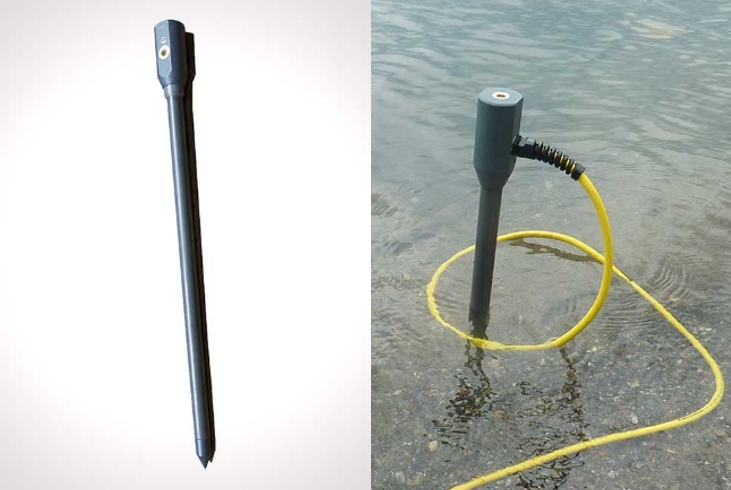
Discrete subsurface temperature measurements have been made in stream environments using three basic approaches:
Each of these approaches have pros and cons; the suitability of each of these approaches is dependent on the environmental application and specific needs of the study. Deployment of temperature sensors using these methods may be limited to shallower surface water depths and can be susceptible to damage at high stage from increased velocity or debris.
The TROD is an improvement in the design of approach 1 and consists of multiple self-logging temperature sensors in a 1 m probe. The TROD has several advantages over traditional methods:
A version of the TROD has been constructed for use without the communication cable for situations where visibility may expose the instrumentation to vandalism (i.e., urban streams) or where burying the cable may be impractical (i.e., dynamic lake shore environments). The sensor spacing interval and depth can be chosen to optimize observation density for a variety of applications.

Methods for monitoring sediment temperature in a surface water system. The dash line indicates high stage conditions with water submerging the top of the piezometer.

TROD with and with out the communication cable.